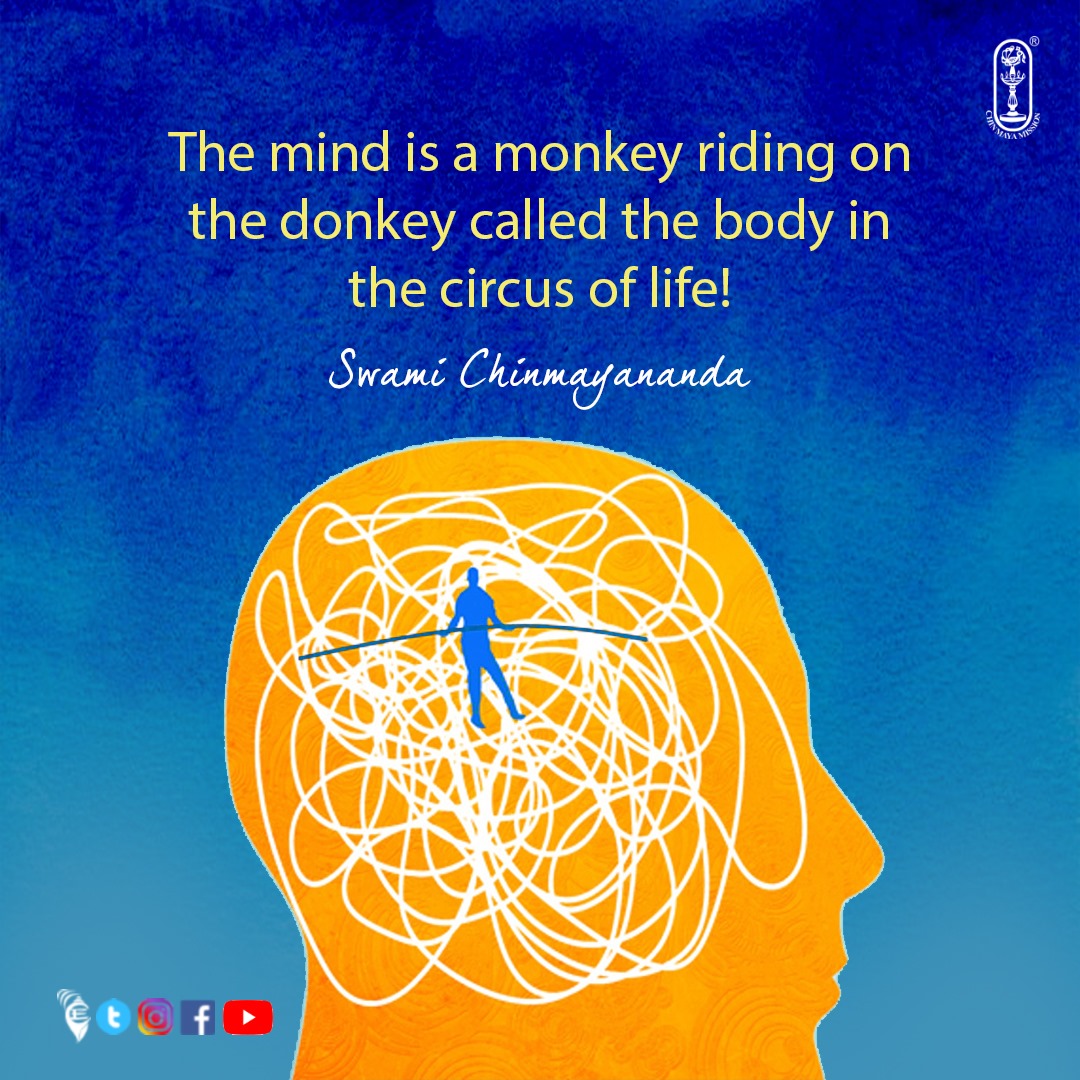MIND : ITS MYSTERIES & ITS CONTROL - CHAPTER - 34.1-2 to 4. Swami Sivananda.
====================================================================
====================================================================
Saturday, November 27, 2021. 5:00. AM.
MIND : ITS MYSTERIES & ITS CONTROL :
CHAPTER 34.
34-1.SAMADHI :
34.1-2 to 4. THE DIFFERENT KINDS OF SAMADHI : Continued ...
======================================================================
=======================================================================
YOGIC SAMADHI AND VEDANTIC SAMADHI
There is a difference between the Nirvikalpa state of a Yogi and the Nirvikalpa stateof a Vedantin. The former concerns the mind. The latter concerns the pure Atman or Brahmanonly. In Yogic Samadhi, Dhyeya remains. Dhyeya means the object of meditation. In VedanticSamadhi, Kevala Asti (Existence alone) remains.
Savikalpa Samadhi And Nirvikalpa Samadhi
The ground floor represents the life of passion in the sense-universe. The first storeycorresponds to Savikalpa Samadhi. The second storey is tantamount to Nirvikalpa Samadhi.The third storey represents the Sahajavastha or a Jivanmukta. The moving of a bullock cartcan be compared to Savikalpa Samadhi. It stops. This is Nirvikalpa Samadhi. The bulls aredetached. This is Sahajavastha. When the Yogi has reached the last perfect stage ofmeditation and Samadhi, the fire whereof burns surely all the residue of his actions, heat once gets Liberation (Jivanmukti) in this very life.
In Savikalpa Samadhi, there is Triputi or the triad- Dhyata (the meditator), Dhyana(meditation) and Dhyeya (object of meditation). In Nirvikalpa Samadhi, this Triputivanishes (Triputirahita). Nirvikalpa means “free from all sorts of modifications andimaginations.” The mind completely melts in Brahman. The happiness or bliss that youget in Savikalpa Samadhi is termed Rasasvada. This is also an obstacle (Pratibandha orVighna) for further spiritual progress. It makes you stop here. It cannot liberate you.You must further march onwards to attain the highest Nirvikalpa state wherein lies yourwhole freedom.
Advantages Of Bhakti Yoga Sadhana
The practices of Hatha Yoga and Raja Yoga are not suited to the majority of men in thisage, while they have always an irresistible charm for such practices because of theirapparent concreteness and promise of speedy rewards. A vast majority of persons have nogood physique and robust constitution. They are weaklings. In this age, children begetchildren. There are baby mothers. Devotion or Bhakti Yoga is, therefore, easy and safe.Any man can repeat the Name of God. Anyone can sing His praise. Without a mother, youcannot have a son. Even so, without Ananya Bhakti (one-pointed or single-minded devotion),you cannot have Jnana. When Bhakti is fully ripe, Brahma-Jnana dawns of itself, withoutmuch effort on the part of the Sadhaka.
Any Mantra is very powerful. It purifies the mind. It induces Vairagya. It causesAntarmukha Vritti. Every Mantra has a Rishi who gave it; a Devata as its informing power;the Bija or seed, a significant word which gives it a special power; a Sakti or energy ofthe form of the Mantra, i.e., the vibration-forms set up by its sounds; the Kilaka or thepillar, that which supports and strengthens the Mantra. Kilaka is a sort of plug whichconceals the Mantra-Chaitanya. By constant and prolonged repetition of the Mantra withBhava (feeling or right mental attitude) and concentration, the Mantra-Chaitanya isawakened. Then the Sadhaka gets Mantra-Siddhi. There is a spiritual current in allMantras. A Mantra takes the devotee’s soul first to one centre and then to another and soon, till access is gained to the goal or final region. Dhruva had Darshana of Lord Hari byrepeating the Dvadasakshara (consisting of twelve letters) Mantra ‘Om Namo BhagavateVasudevaya’ given by Rishi Narada. Prahlada had Darshana of Mahavishnu by repeatingthe “Narayana” Mantra. Valmiki realised God by repeating “Mara-Mara”(which becomes Rama-Rama during the course of repetition). Tukaram of Maharashtra becameone with Lord Krishna by chanting always “Vittala-Vittala,” the name of thereputed image of Sri Krishna at Pandharpur.
Contemplation-filling-identification
Mark the three processes that take place in the mind during meditation. These are:CONTEMPLATION, FILLING, IDENTIFICATION. This is another triplet. Remember these threeword-images. Repeat them mentally while doing Sadhana. It will help you a lot really.
Contemplate on Atman. Fill the mind with Atman. Then the mind becomes identified withBrahman in accordance with what is known as the Bhramarakitanyaya (analogy of wasp andcaterpillar). As you think, so you become. Think you are Brahman; Brahman you will become.
When the mind is withdrawn from the objects and deep reflection sets in, the objectiveconsciousness is shut up; Savitarka Samadhi commences. Ratiocination, analysis andsynthesis (a priori and a posteriori ways of reasoning), investigation andabstract reasoning take place. This is Samadhi with reasoning. Evil thoughts cannot enternow. The mind is Sattvic.
Deep study of philosophical works with Chitta Suddhi is itself a form of Samadhi. Themind here is free from worldly thoughts.
When your meditation becomes deep, you generally operate through the subtle KaranaSarira only. The Karana-Sarira consciousness becomes your normal consciousness. Yogis havea normal Karana-Sarira consciousness. Bhaktas like Lord Gouranga, Tukaram, Tulasidasidentified themselves with their Karana Sarira and had a normal Karana-Sariraconsciousness. A Bhakta of Karana-Sarira consciousness is an occupant of Brahma Loka evenwhen living in the fleshy tabernacle. He is one with Brahman or Hiranyagarbha. He hasDivine Aisvarya; yet he has a thin ethereal body. He keeps up his individuality. Awhirlpool is one with the whole mass of the water. It has a separate existence also.Similar is the case with the Bhakta who has a life with his Karana-Sarira in Isvara.
Next : How To Attain Samadhi Through Vedanta
To be continued ...
=====================================================================






Comments